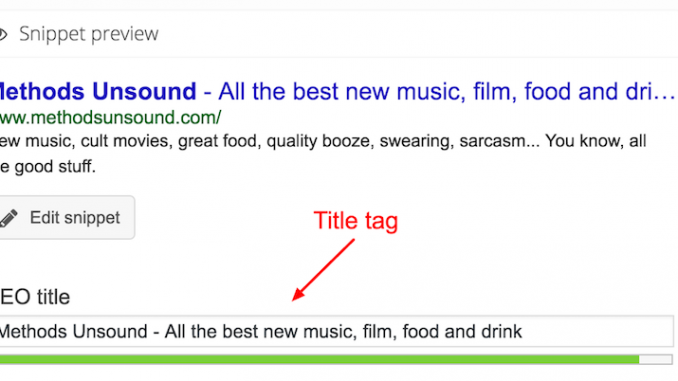
When trying to optimise a new blog for SEO, most individuals and businesses can get confused. There’s sometimes too much information, and guidance can be very technical.
Here I’ll be sharing a few techniques that can be carried out by someone with little or no previous knowledge of SEO.
There are three top ranking signals used by Google to determine if a blog is relevant to a particular search query and how they should rank in search engine results pages (SERPs). They are:
Content – is the content applicable to the search query and how relevant is it?
Links – is your content good enough to be linked to, especially by authority sites.
RankBrain – artificial intelligence used in Google’s algorithm has become the third most important signal.
Here are five quick tips to get you started…
Keyword research
Creating your blog can be easy depending on your experience but the real work starts before you begin creating quality content.
First you need to research and understand keywords your customers are using to search for your products and services.
You want to avoid colossal mistakes such as:
Choosing over-specific keywords with no traffic.
Using umbrella keywords which are not concise enough such as men’s clothing. I would advise you go for long-tail keywords such as winter men’s clothing or snowboarding apparel for men, to beat the competition.
Choosing keywords which do not convert or are not relevant to your business.
It’s not helpful or compulsory in any way to have your keyword in your domain, some years back it would have helped with ranking but since Google’s Exact Match Domain Update in September 2012, it is no longer important and helpful as it used to be.
For a better understanding of keyword research and tools to use, check out this collection of free SEO resources, which includes tools to perform your research.
Generate an XML sitemap
XML sitemaps are files that list URLs of a site along with metadata about each URL (when it was last updated, how often it changes, and how relative it is to other URLs in the site) so that search engines can intelligently crawl the site.
With the above-listed benefits of generating and submitting your sitemap to search engines, your content is understood better by search engines and it ranks better in the SERPs.
Fix your permalink or URL slug
Permalinks or URLs are important in optimizing a new website, having unnecessary characters in your URLs such as question and punctuations marks, irrelevant numbers might affect how your website is understood by search engines making it hard to crawl and indexed except for authoritative websites.
When creating URLs for your blog avoid dynamic URLs such as www.mydomainname.com/?p=34322304, they are ugly and do not tell search engine crawlers and blog visitors what the URL is about. Instead use statics URLs like the ones used on https://searchenginewatch.com/static/guides.
Title tag and meta description
Each page on your blog needs to have a title tag, which outlines what the page is about. Having your keywords in your title tag can help your web page rank higher in SERPs. Title tags can exceed the 70 character limit and include your business or brand name with a keyword.
Meta descriptions on your web pages outline in greater detail what the pages are about. To fully maximize your meta description, fill out the description with humans in mind as this determines whether users click through to your blog from search engine results.
Mobile responsiveness
Making your blog mobile responsive is a win-win for both you and your blog visitors leading to better SEO and higher rankings from search engines. According to consumer barometer with Google, In many cases, smartphones are used at least as often as computers for accessing the internet.
With Google’s update to their algorithm, mobile friendly sites now rank higher than non-mobile responsive site. Head over to Google’s mobile-friendly test tool to determine the mobile responsiveness of your blog.
Also, pay attention to your CSS and theme, this could deter your blog from responding properly on mobile devices, get a theme which was developed with clean code, that’s fast and intuitive.
Conclusion
There are countless SEO best practices when setting up a new blog but I covered the very basics that are compulsory. Use common sense and try to create great content that gains backlinks.
What other practices would you perform on a new website?
Source: ClickZ
Link: Five simple SEO practices to remember when setting up a new blog



Leave a Reply